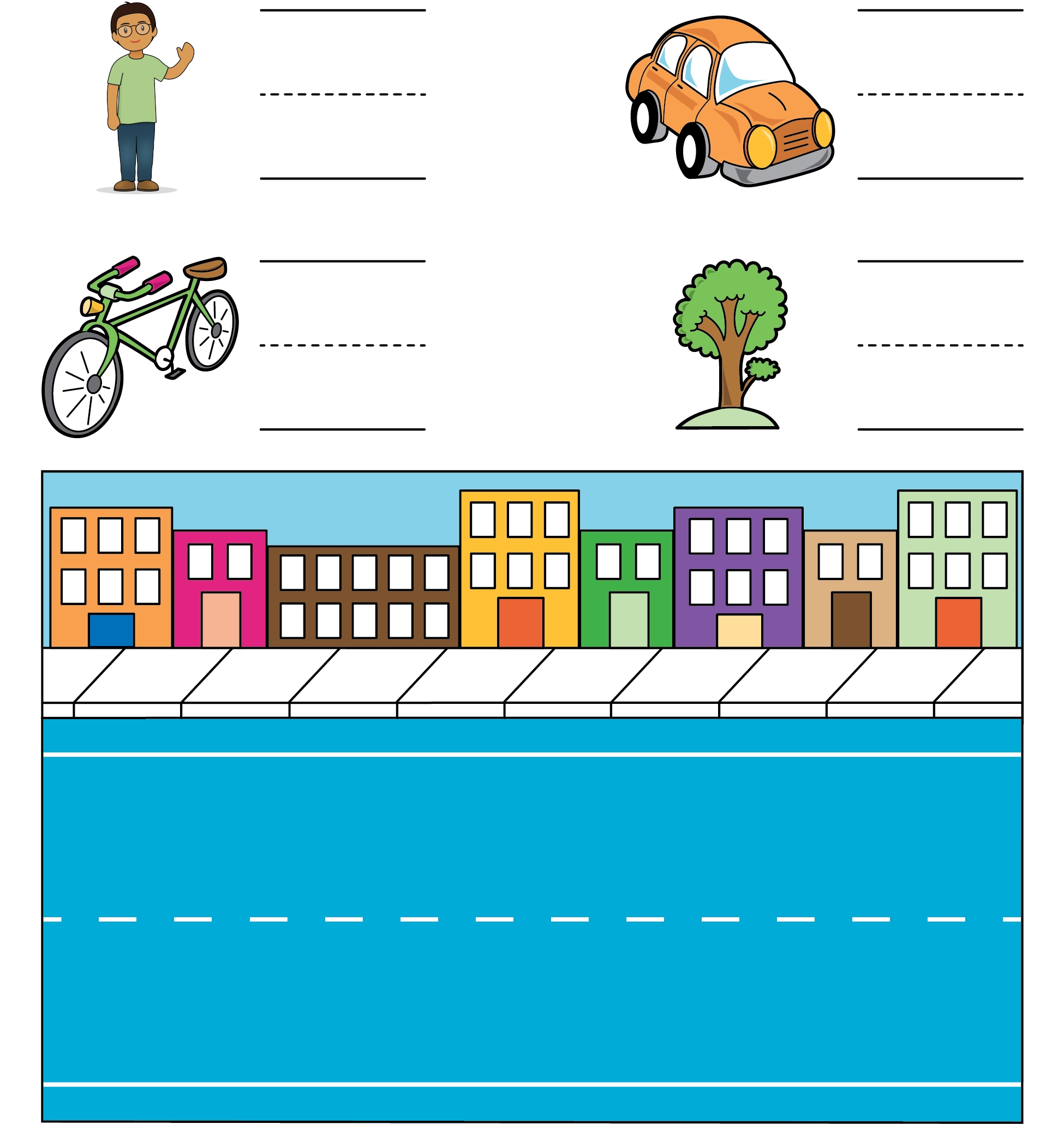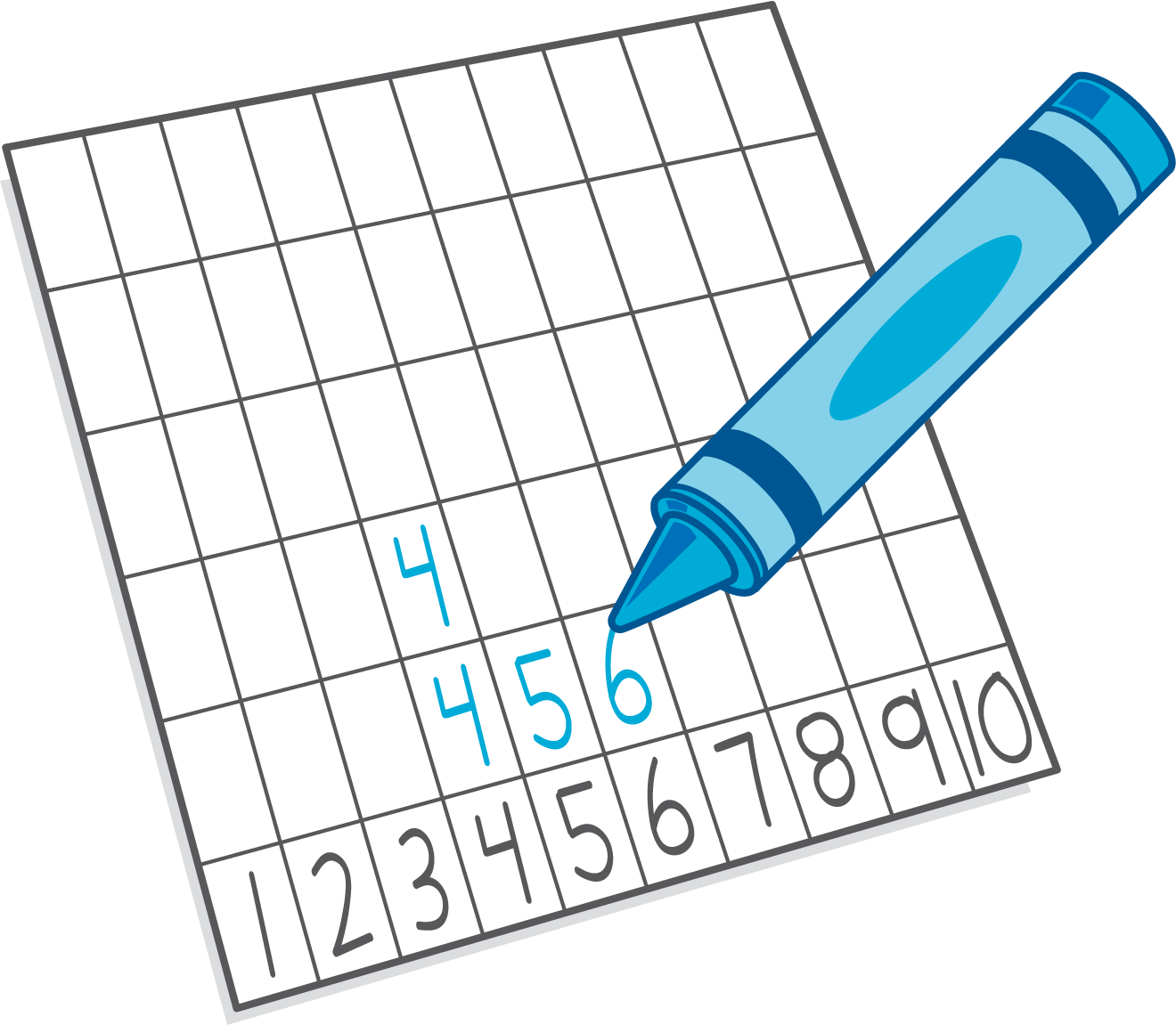Lesson 21
Compare Numbers
Warm-up: Act It Out: Hand Out Milk (10 minutes)
Narrative
The purpose of this warm-up is to allow students to connect language to mathematical representation, which will be useful when students need to compare quantities and numbers in later activities. In the synthesis, students have the opportunity to practice using the language “less” to compare quantities.
This warm-up gives students opportunities to make sense of a problem by acting it out first before thinking about how to solve the problem (MP1).
Launch
- Groups of 2
- Display and read the story.
- “What is the story about?”
- 30 seconds: quiet think time
- Share responses.
- Read the story again.
- “How can you act out this story?”
- 30 seconds: quiet think time
Activity
- “Discuss your thinking with your partner.”
- 1 minute: partner discussion
- Share responses.
- Choose a way to represent the story as a class.
- Read the story together.
Student Facing
Tyler is handing out the drinks to his class.
9 students chose milk.
5 students chose water.
Did fewer students choose milk or water?
Student Response
For access, consult one of our IM Certified Partners.
Activity Synthesis
- “Did fewer students choose milk or water? How do you know?” (Fewer students chose water. I know that 5 is less than 9. 5 comes before 9 when we count.)
- “Tell your partner about the numbers 9 and 5 using ‘less.’”
Activity 1: Which Number is More? (10 minutes)
Narrative
The purpose of this activity is for students to compare numbers in a way that makes sense to them. Students can use physical objects or make drawings to represent each number (MP5), and match or count to compare. Students can also use their knowledge of the count sequence and understanding that each successive number refers to a quantity that is one more to compare the numbers. In the synthesis students describe how creating representations of numbers helps to compare numbers.
Supports accessibility for: Visual-Spatial Processing, Conceptual Processing, Organization
Required Materials
Materials to Gather
Launch
- Groups of 2
- Give students access to connecting cubes or counters.
- “Work with your partner to figure out which number is more. Circle the number that is more.”
Activity
- 5 minutes: partner work time
- Monitor for students who create representations of the numbers using cubes or a drawing and use these representations to compare.
- Monitor for students who counted to figure out which number is more.
Student Facing
Circle the number that is more.
Student Response
For access, consult one of our IM Certified Partners.
Advancing Student Thinking
If students circle the number that is less instead of the number that is more, consider asking:
- “What do you know about these two numbers? What are you trying to figure out?“
- “How can you use the cubes to show each number? How can the cubes help you figure out which number is more?“
Activity Synthesis
- Invite previously selected students to share the representations they made and how they used them to figure out which number is more.
- “How did counting out the groups of objects or drawing pictures help you figure out which number is more?”
- Invite previously selected students to share how counting helped them compare the numbers.
- “We know 8 is more than 5. Compare these numbers using ‘less’.”
Activity 2: Which Number is Less? (15 minutes)
Narrative
The purpose of this activity is for students to write and compare numbers 1–10. Students compare numbers in any way that makes sense to them.
Advances: Speaking, Conversing, Representation
Required Materials
Launch
- Groups of 2
- Give each group a number mat and 2 cubes. Give each group of students access to connecting cubes or counters.
- “We are going to roll two numbers and figure out which number is less.”
- Invite a student to act as your partner in the demonstration.
- “First we each roll a cube onto the number mat.”
- Demonstrate rolling cubes onto the number mat.
- “Next we write both numbers on the lines.”
- Demonstrate writing each number on a line.
- “In the last activity we circled the number that is more. Now we are going to circle the number that is less. What could we do to figure out if 8 or 4 is less?” (You could draw pictures. You could count out objects and compare them. You could think about which number comes first when you count.)
- 30 seconds: quiet think time
- Share responses.
- Demonstrate one student suggestion for comparing 8 and 4.
- “4 is less than 8, so we circle the number 4.”
- “It’s your turn to play the game with your partner. You will each roll one cube, write down the numbers, and work together to figure out which number is less.”
Activity
- 5 minutes: partner work time
Student Facing
Write the numbers you roll.
Circle the number that is less.






Write the numbers you roll.
Circle the number that is less.






Student Response
For access, consult one of our IM Certified Partners.
Activity Synthesis
- Display 9 and 2.
- “Which number is less? How do you know?” (2. I know that 2 is small. 9 is a lot more. When you count you come to 2 first which means it is less.)
Activity 3: Centers: Choice Time (20 minutes)
Narrative
The purpose of this activity is for students to choose activities that offer practice with number and counting concepts
- Less, Same, More
- Math Libs
- Number Race
Required Materials
Materials to Gather
Required Preparation
- Gather materials from:
- Less, Same, More, Stages 1-4
- Math Libs, Stage 1
- Number Race, Stage 1
Launch
- “Today we are going to choose from centers we have already learned.”
- Display the center choices in the student book.
- “Think about what you would like to do first.”
- 30 seconds: quiet think time
Activity
- Invite students to work at the center of their choice.
- 8 minutes: center work time
- “Choose what you would like to do next.”
- 8 minutes: center work time
Student Facing
Choose a center.
Less, Same, More

Math Libs

Number Race

Activity Synthesis
- Display student pages or materials from centers throughout the units.
- “What was your favorite center to work on during this unit? What made it your favorite center?”
Lesson Synthesis
Lesson Synthesis
“Diego doesn’t know if 7 is more or less than 4. How could you help Diego understand that 7 is more than 4?” (I could tell him to show 4 fingers on his hands and show 7 fingers on my hands so he could see 7 is more. I could tell him that when you count, you get to 4 but then you need to say more numbers to get to 7 so it is more. I know that 4 is less than 5 and 7 is more than 5.)
Cool-down: Unit 2, Section C Checkpoint (0 minutes)
Cool-Down
For access, consult one of our IM Certified Partners.
Student Section Summary
Student Facing
In this section we compared numbers. We used objects and drawings to help us figure out which number is more and which is less.




We also learned that we can use what we know about counting to compare the numbers.
1, 2, 3, 4, 5, 6, 7, 8, 9, 10
5 comes before 8 when we count.
5 is less than 8.
8 is more than 5.



